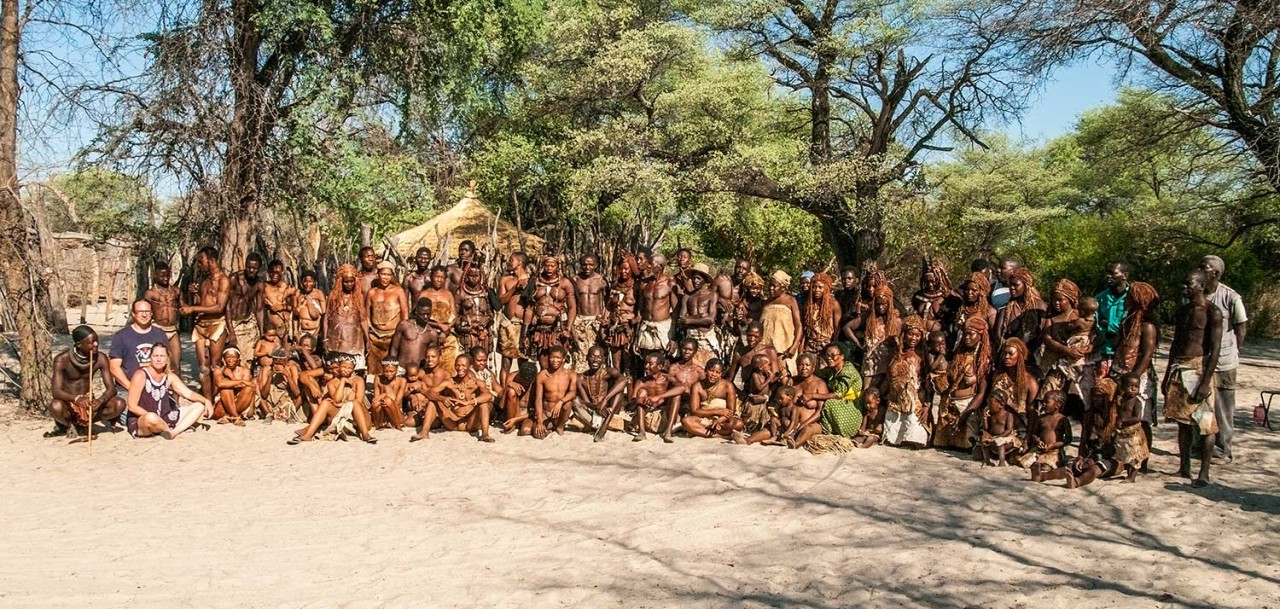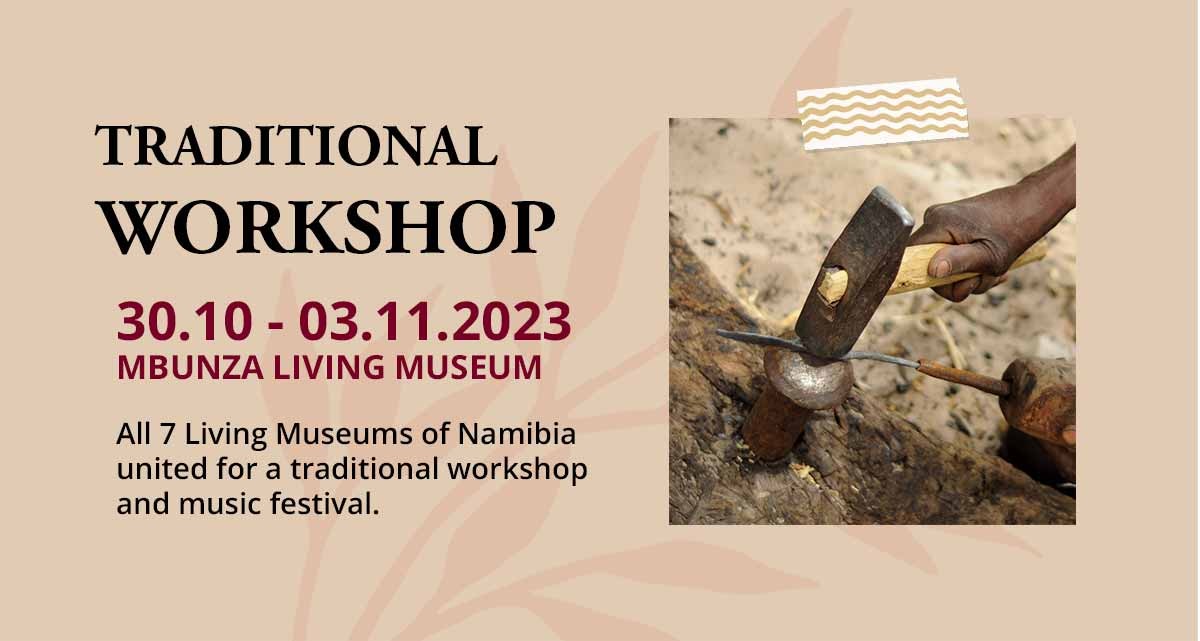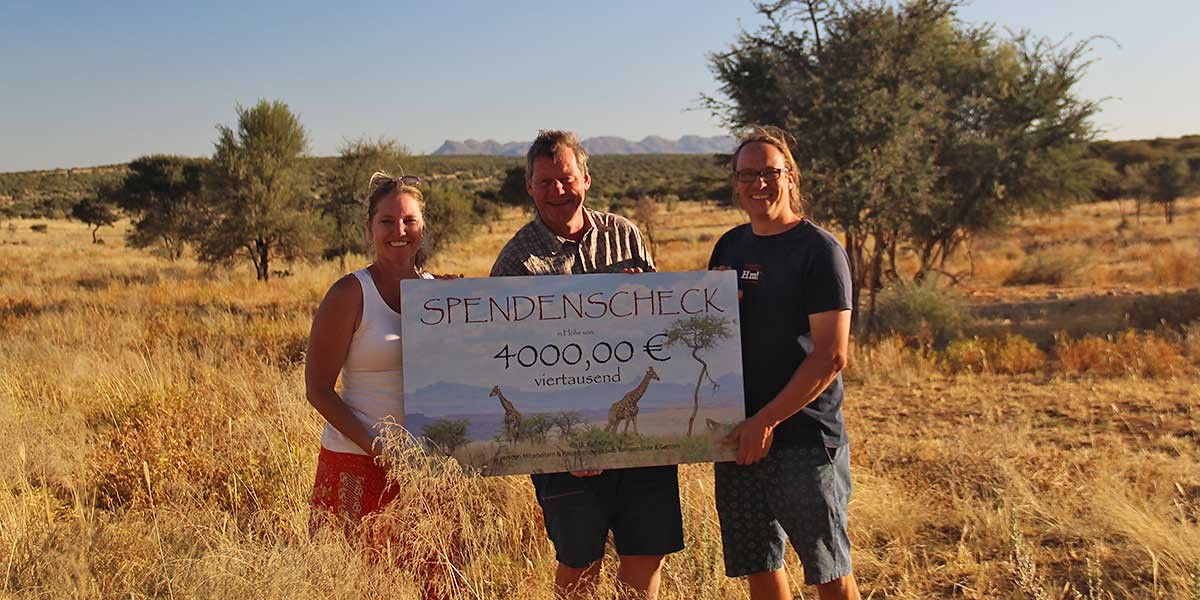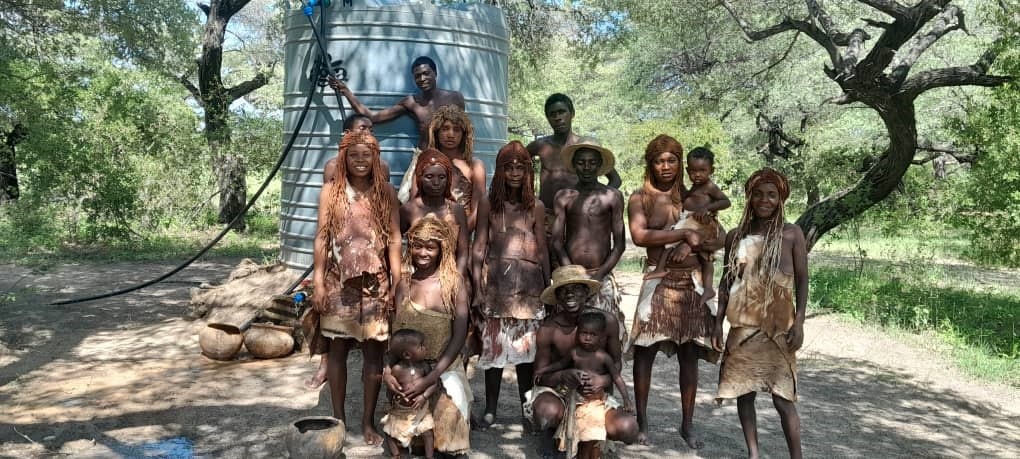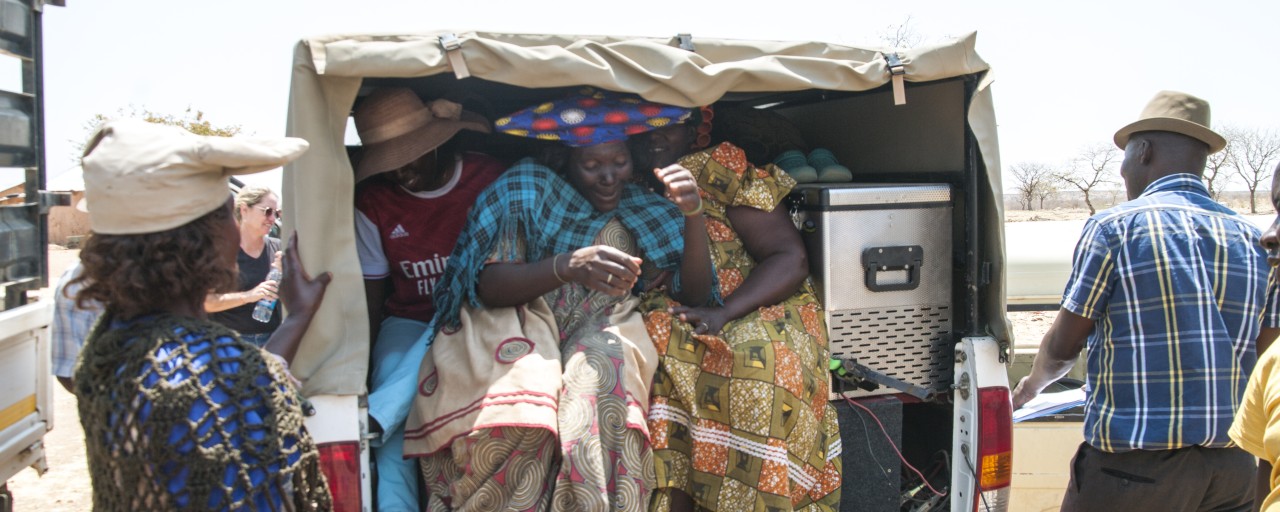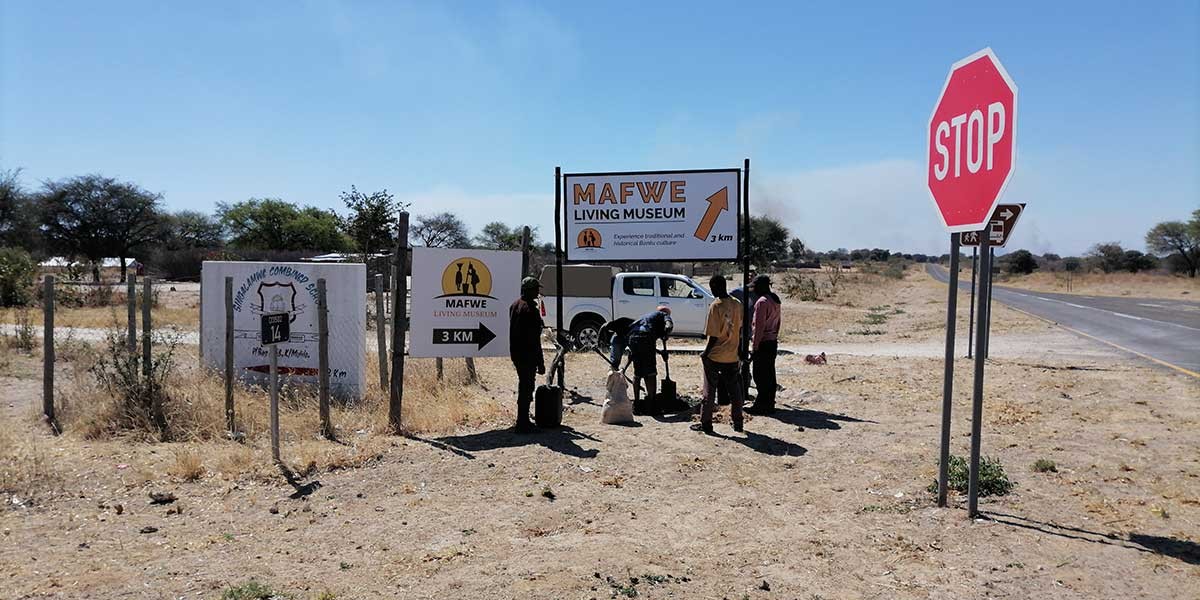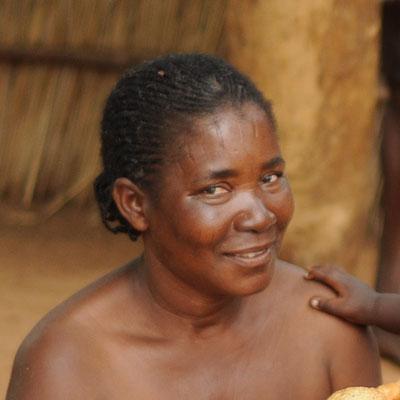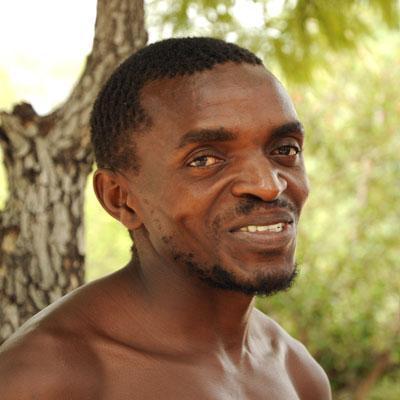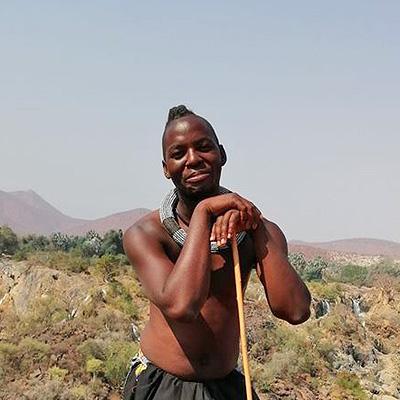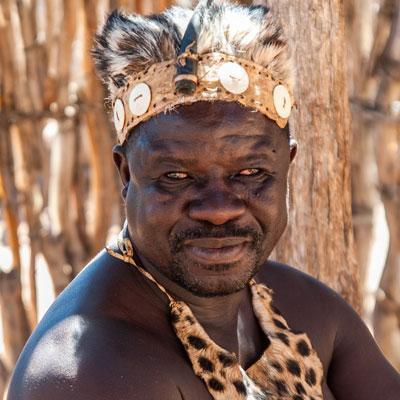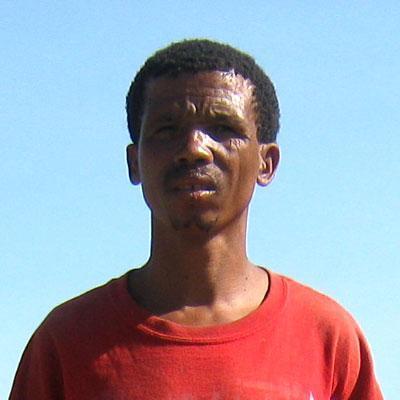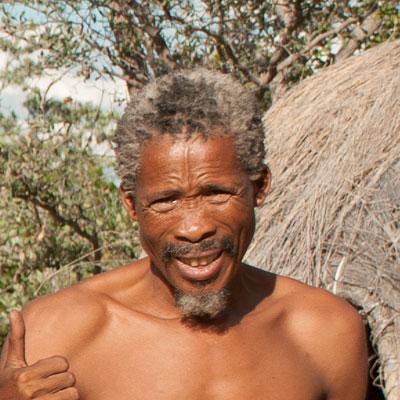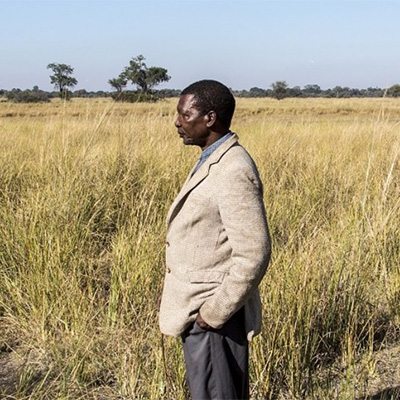The history of the LCFN
The most important events of our work since 2004.
2004
The Living Museum in Grashoek
The idea of living museums in Namibia existed already prior to the foundation of our non-profit organization. The Namibian tour guide Werner Pfeifer imported the concept from Germany, where he had worked in various living museums himself. He developed a suitable version for the rural areas of Namibia. This concept was first introduced to the Ju/‘Hoansi-San from Grashoek in 2003 who designed their own museum within a year. The Living Museum of the San opened in June 2004 and has fundamentally contributed to the later foundation of the LCFN.
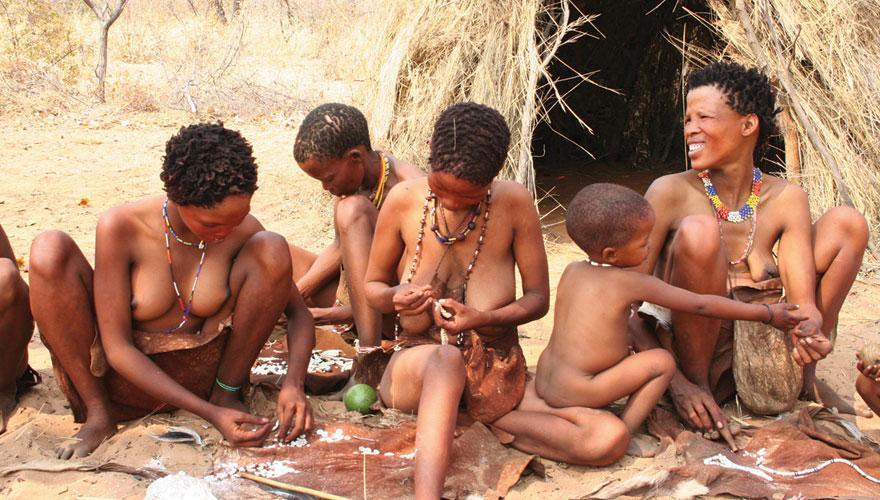
2005
Additional attempts to initiate living museums
In 2005 additional attempts to spread the idea were carried out, still financed by private means. Particularly promising were the meetings with the Mafwe in Singalamwe in Caprivi Strip, today‘s Zambezi-Region.
At the end of 2005 the first „Bushman-Safari“, made possible by private donations, was organized. Some LCFN members took 30 Ju/‘Hoansi-San from the museum in Grashoek on a journey through Namibia for one and a half weeks to provide them with a chance to get to know other areas of their own country.
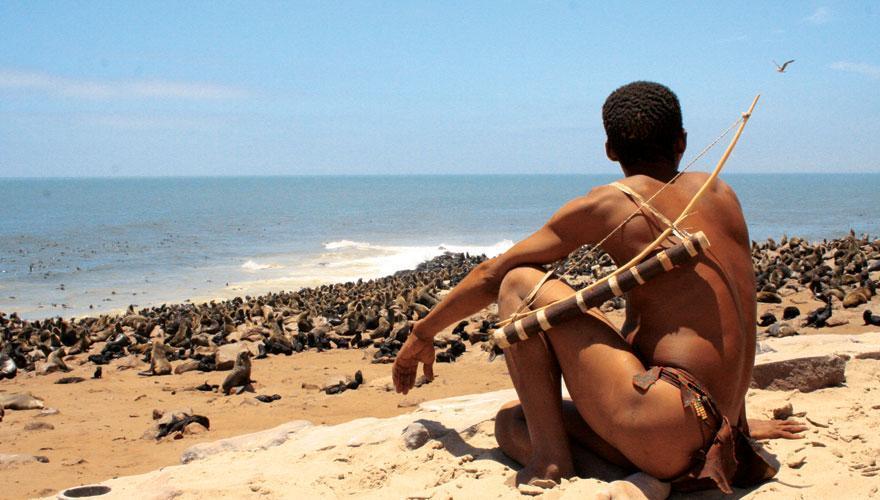
2006
Laying the foundations – the beginnings of the LCFN
In 2006 the foundation stone for the formation of our German association Living Culture Namibia e.V. was laid, into which the Living Culture Foundation Namibia merged during the subsequent years.
The concept of a living museum was further developed for the local communities. To this end, a simple finance and management concept was worked out. Additionally, a scientific concept was elaborated and formulated. Today‘s project manager Sebastian Dürrschmidt travelled to Namibia to conduct interviews with the Ju/‘Hoansi-San for his master‘s thesis on the „concept of the Living Museums“, investigating the basics and the success of the concept.
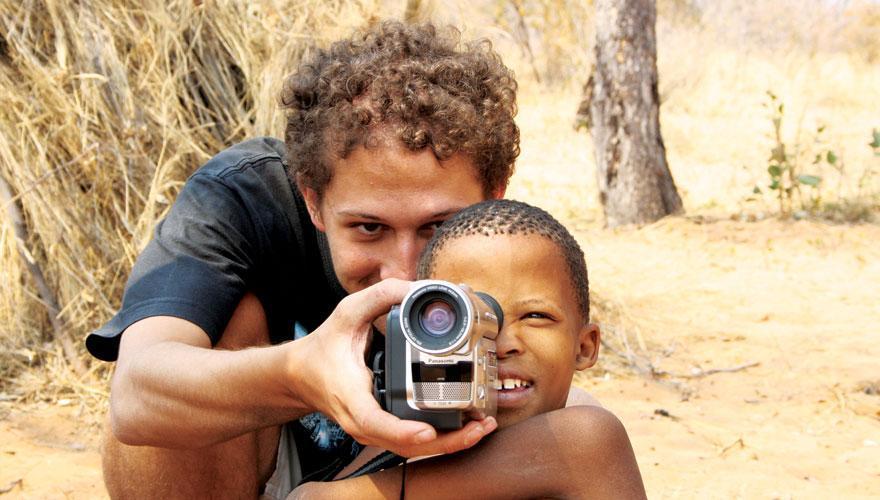
2007
Foundation LCN e.V. & Projects in Namibia
In 2007 our work focused mainly on project meetings with the Mafwe, whose preparations for their Living Museum developed well.
On July 28th 2007 we were finally able to found our non-profit association Living Culture Namibia e.V. after extensive organizational preparations. Many of the future members met in Tangermünde in order to set up the legal and financial basis for our work in Namibia.
In December 2007 a perfect dress rehearsal took place in the Living Museum of the Mafwe – the decision to open Namibia‘s second living museum was definite.
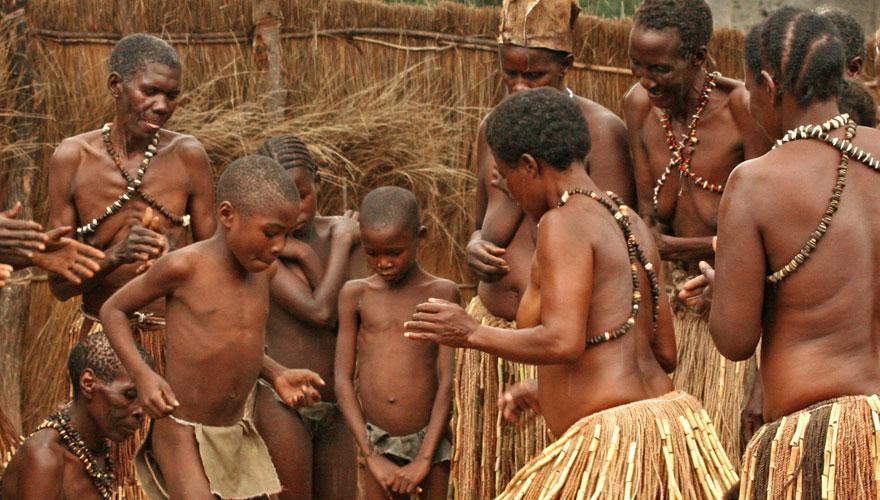
2008
Opening of the Mafwe museum, etc.
Joint efforts of the project group of the Mafwe in Singalamwe on the one hand and members of the LCFN in Namibia on the other made the official opening of this second living museum of Namibia on 10th February 2008 possible. The Mafwe museum shows the traditional, pre-colonial culture of the Mafwe-people of Northern Namibia.
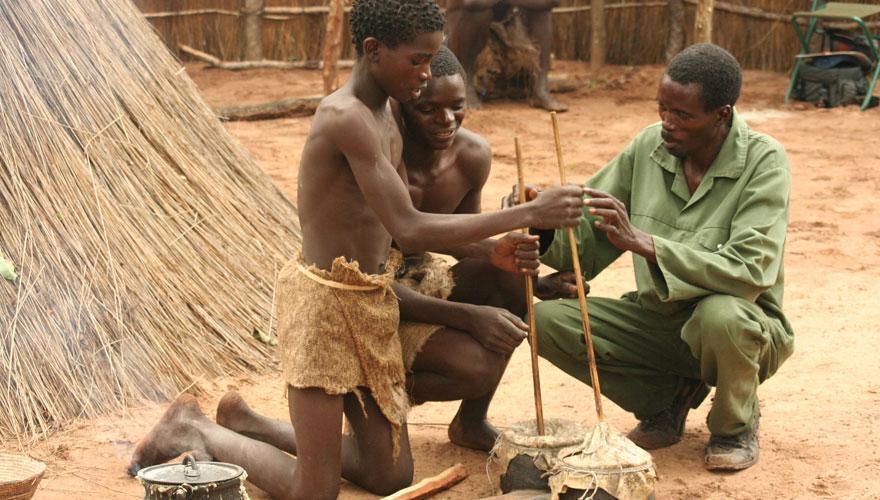
After Hans-Bernhard //aoseb had contacted us for the first time at the end of 2007 concerning his idea of building a living museum of the Damara people, we traveled towards Twyfelfontein to „Damaraland“ three times in 2008, in order to speak with the project group, explain the concept and stimulate their motivation.
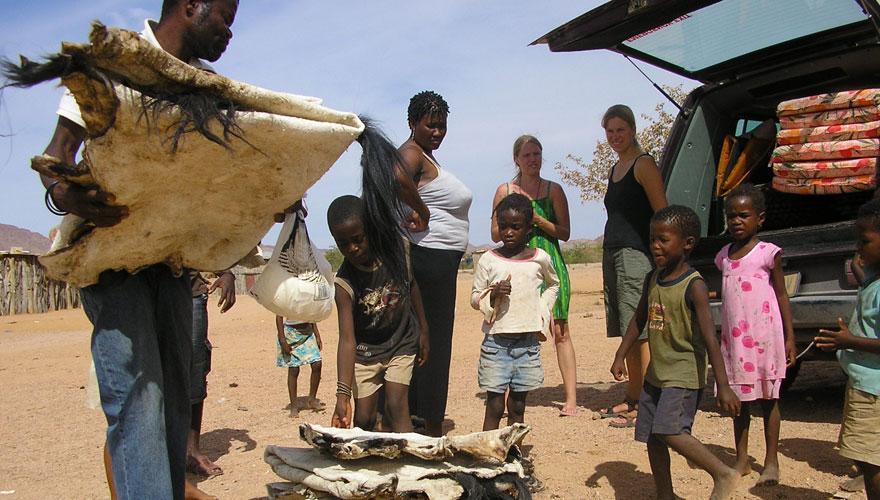
In 2008 we met for the first time with a group of young Kavango people near Rundu, who had taken interest in the concept of the living museums.
2009
Shaping of the Damara and the Kavango museum, safari of anniversary
We realized, that our ideas of the time frame for the building of a living museum often did not match those of the project executing group. In particular we became aware that it is not so easy to build a living museum within a group (in this case the Damara), that has lost many aspects of the original culture already. We therefore organised an inter-cultural workshop between the project group of the Damara and four actors of the meanwhile very successfully operating Living Museum of the Ju/’Hoansi of Grashoek. The idea was that they should exchange their points of view and experiences concerning the running of a living museum on the one hand and produce traditional craft together on the other. It turned out to be a great success that was crucial to the development of the Damara museum.
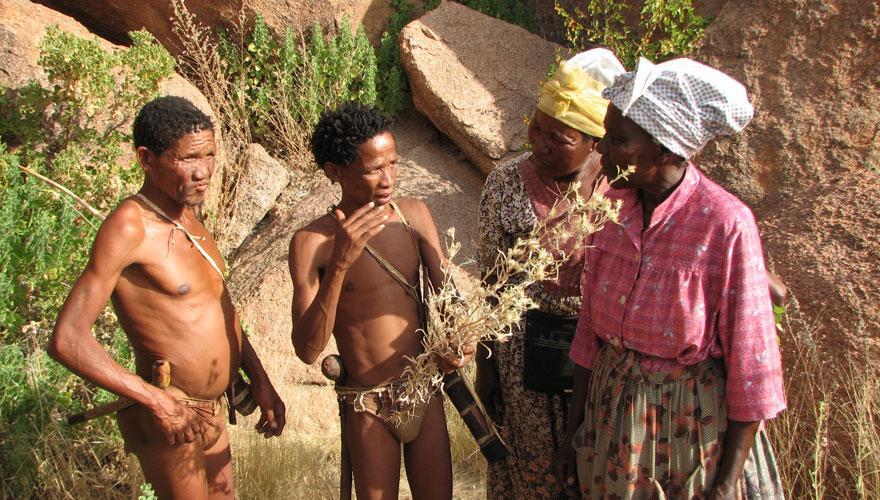
A suitable place for the museum of the Kavango people was found at the lake of Samsitu, and the group was very motivated. However, after a series of agreed-upon meetings which failed to materialize due to a variety of reasons (such as floods and droughts) we admittedly felt rather disillusioned.
Some trips took us to the Ju/‘Hoansi Museum and the Mafwe Museum, where a number of challenges required special attention and discussion. At the end of the year, however, these problems (such as the distribution of the income and cases of alcoholism) were mostly solved.
At the end of 2009 a safari was organized, made possible by private donations, for the people of the Ju/‘Hoansi Living Museum to celebrate the museum’s fifth anniversary. It took them to the Damara, the Himba and the Mafwe people. On this tour, !Gamace N!Aici, one of the most committed members of the Grashoek Museum, developed the idea of founding another living museum of the San, namely in a conservancy in which they are still entitled to hunt traditionally.
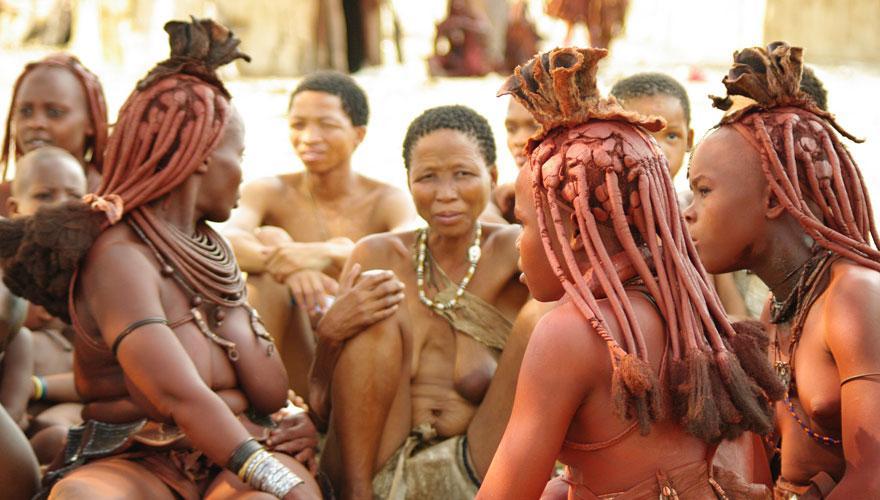
2010
3 new museums inaugurated, one closed down again
2010 was a very work-intensive and successful year for the LCFN.
After year-long preparations and a successful final rehearsal on the 06.02.2010 we were eventually able to open the Living Museum of the Damara on the 20.02.2010. A great success with a cultural group that had virtually forgotten nearly all its traditional culture.
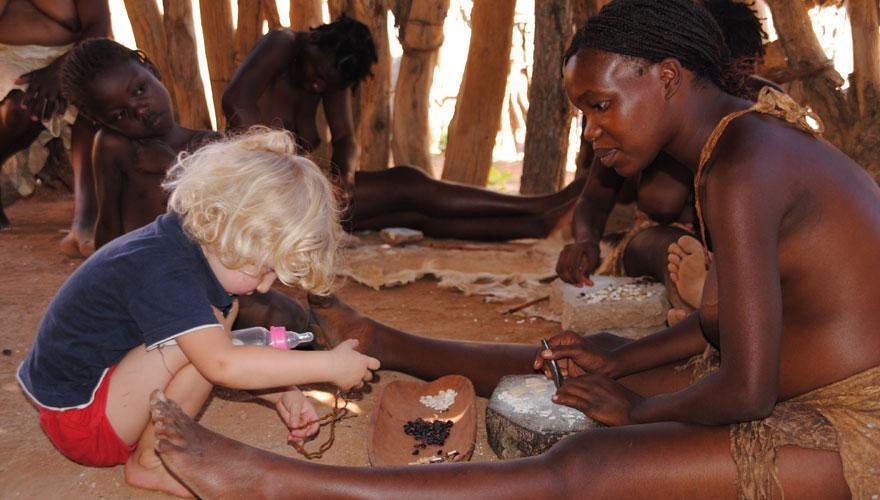
At the beginning of the same year !Gamace N!Aici entered into talks with a community of Ju/‘Hoansi at /Xa//Oba and explained the idea of opening a Living Museum which could offer traditional hunting activities. The San were thrilled and developed their Living Museum in the blink of an eye under !Gamace’s guidance. The Living Hunter’s Museum was thus able to be opened on the 27.02.2010 already.
In May 2010, we were invited by a San group from South Africa, the #Khomani-San to introduce the concept of the Living Museums in three local communities. They were able to realise a somewhat modified project in South Africa.
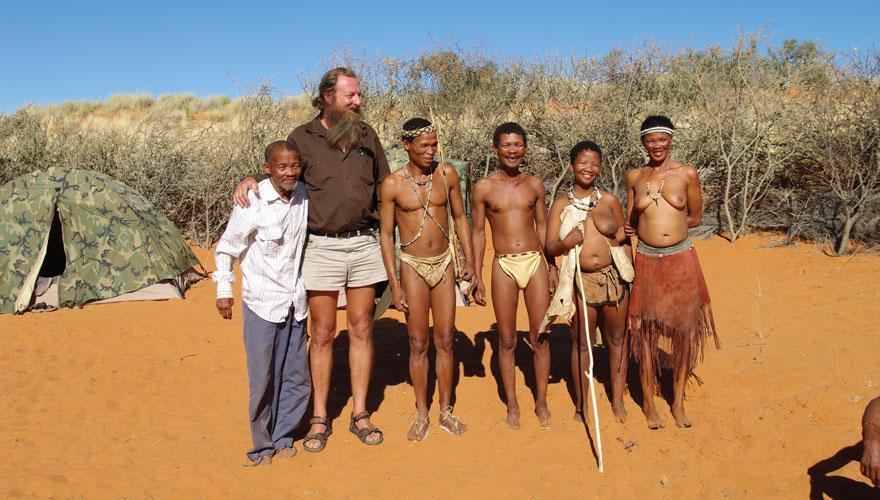
In July and again in October we introduced the concept of the Living Museums to a group of Ovahimba. A community east of Opuwo showed interest in the concept and had chosen a beautiful site.
Other trips took us to the Khwe at Divundu, whom we already visited numerous times when driving to the Mafwe Living Museum.
A bush campsite with dry toilet was built at the Mafwe Living Museum.
In November, we travelled to the south of Namibia and spoke with four communities of the Nama people and explained the concept of the Living Museums – as it turned out later this venture remained unsuccessful.
After the project at the Mbunza has started to stall before it really started we were up for a surprise at the end of 2010. The project group turned out to be highly motivated and had finally found trust in us.
Excursus Nharo Museum: - The first and only museum that had to close. At the beginning of January a little branch of Grashoek, the “Nharo Museum” opened up on a private farm east of Windhoek. Here a family of Nharo San from Namibia’s east and the Ju/‘Hoansi were supposed to work together. The San intended to combine the work in a Living Museum with game keeping on the farm. After several problems with the owner of the farm the whole project shifted to another farm closer to Windhoek. Unfortunately misunderstandings prevailed and in the end the San wanted to return to their family homes. After having invested a lot of work into developing this project we had to close the museum again with heavy hearts. We learnt the lesson that Living Museums could only work on privately owned land under very favourable conditions and that we prefer not like to support these private initiatives anymore.
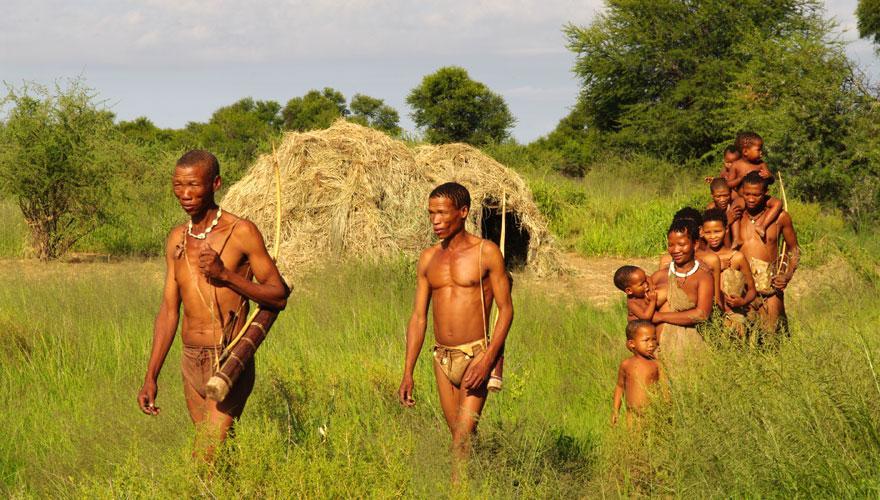
2011
Opening of the Mbunza Museum etc.
After the good prospects at the end of 2010 our work concentrated on the further development of the Mbunza Museum. In January 2011 a very successful traditional workshop was organised in order to train the future project group of the Living Museum of the Mbunza in some traditional skills: Pottery, wood carving, traditional braiding, black smith skills, drum building. The workshop helped to speed up the development process of the museum.
After further visits and a final rehearsal in September we were able to open the museum with a big inauguration on the 22.10.2011. The fifth Living Museum in Namibia.
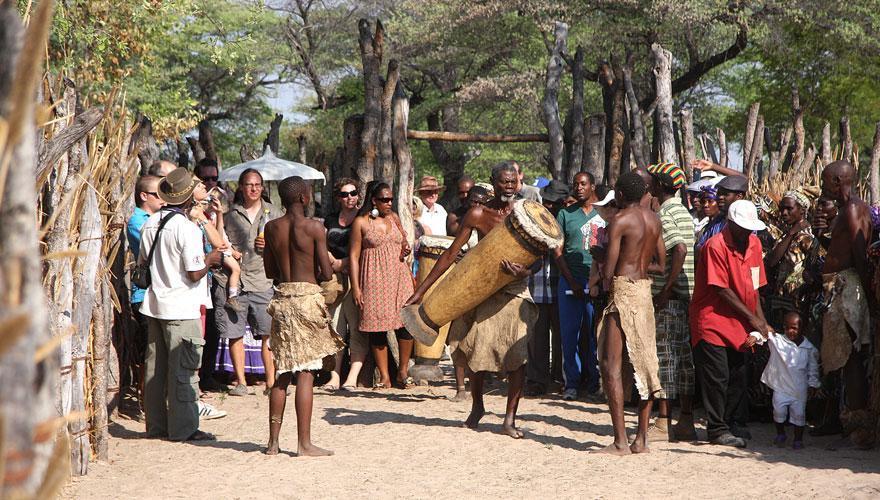
We travelled several times to the Damara Museum during the year as there was need of clarification with regards to the development of the museum, the internal structures and internal misunderstandings. Furthermore, we organized a traditional hut and tools in February which were sent to South Tyrol to the Messner Mountain Museum of the famous Reinhold Messner.
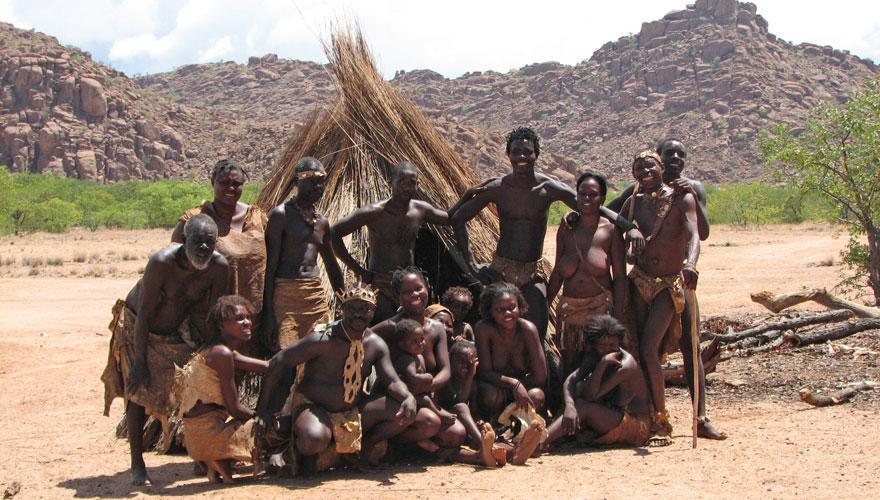
In April 2011 a special initiative was organized by our member Melanie Stenger. Her aim was to raise awareness on hygiene and health to the Living museums and to the respective villages. She gave some important lessons especially to the children of the villages
During 2011 we once again had numerous requests via LCFN from people either wanting to support or wanting to help with the development of new and existing projects. Unfortunately the development of the Khwe and the Ovahimba projects remained stagnant. Our three other museums, the Ju/’Hoansi Living Museum, the Ju/’Hoansi „Hunters“ Museum and the Mafwe Museum operated smoothly in 2011.
2012
Quality assurance
In 2012, we focused on the assurance of the quality in the five existing Living Museums. We visited all of them, analyzed the offered programs and the interactions between actors and visitors. As an outcome, we organized several workshops.The photographers Sezong and Charly Cyris, who provided all pictures to the LCFN, accompanied one of the trips.
One workshop took place in August. The main topic of the workshop was to help the Damara to raise the standard of their museum by meeting representatives of the museums of the Mbunza and the Ju/’Hoansi. During the visits in those museums, strategies of relaxation and further improvement of their own museum should be developed. Finally, a workshop for blacksmithing was realized in the museum of the Mbunza.
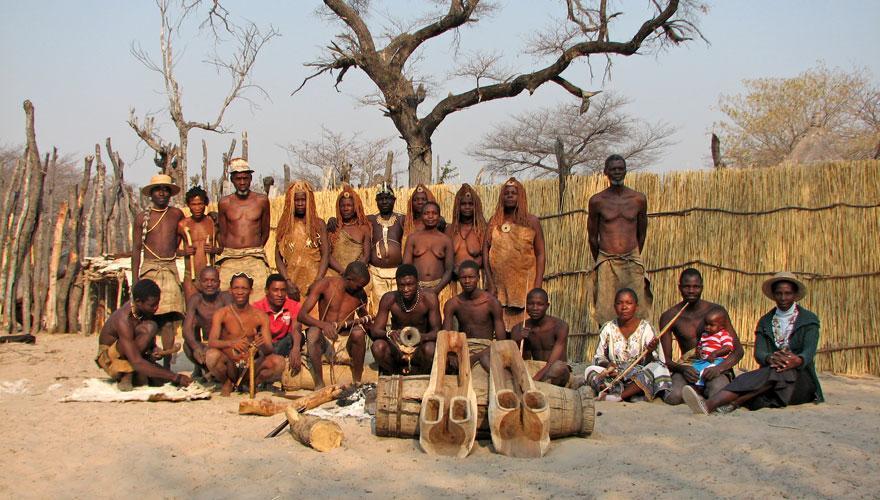
Two groups of the Haikom (Hai||om) showed interest in the concept of a Living Museum. We visited both groups in August, explained the concept, talked about their expectations and their possibilitities to develop this project.
Unfortunately for the two already exisiting projects with the Khwe and the Ovahimba no positive development could be reported for 2012.
2013
New approaches for the Nama and Ovahimba, infrastructure projects
In the beginning of 2013 we decided to put off the two projects with the Ovahimba and the Khwe and we found two new groups, one group of Ovahimba and one group of Nama, which were interested in starting a Living Museum.
In February we went to Gochas and visited the group of Nama, which we already got to know in 2012. We again explained our concept, but without any successful outcome so far.
Furthermore we did several other project tours, e.g. to the Ju/’Hoansi, the Damara, the Living Hunter’s Museum, the Mafwe and the Mbunza. We discussed several small internal issues, provided financial trainings, tried to consolidate structures of the museums, helped with some inter-social problems and provided many other small hints and advices.
Another trip brought us to the far-away Kaokoveld to Purros, where two groups of Herero and Ovahimba showed interest in our concept.
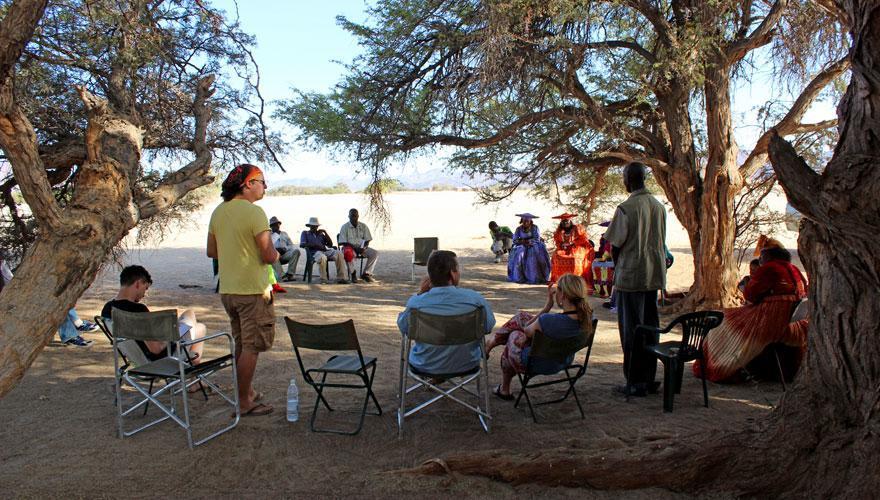
Financed by the Millenium Challenge Account campsites could be build for the museum of the Ju/’Hoansi and for the Living Hunter’s Museum.
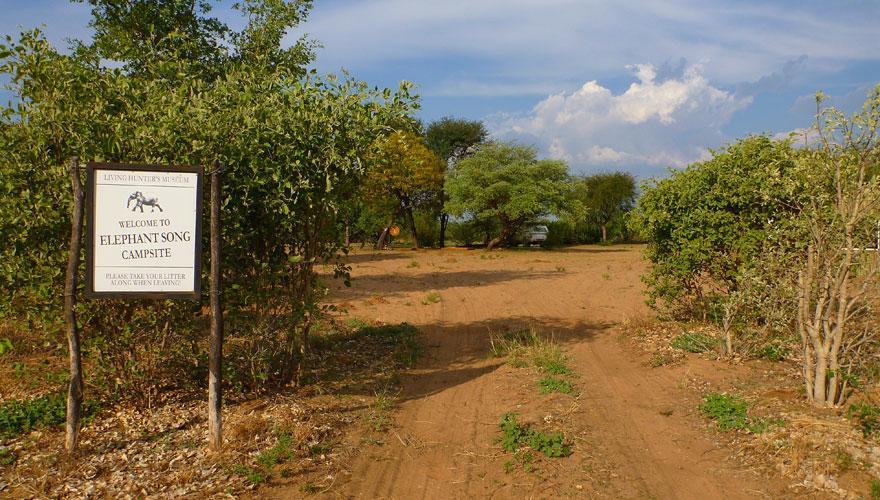
2014
Quality assurance, 10 years Grashoek
Like every year we organized trips to all Living Museums to assure the quality of the traditional presentations and to talk together with the actors about the work and their problems.
Aaron Nambadi, chairman of the “Museums Association of Namibia” (all Living Museums are member of that organization) proposed a film documentary about one of the museums. Upon that, Werner Pfeiffer and the film team visited the museums of the Mbunza and the Damara and, after thorough evaluation decided that the film should be realized together with the Mbunza in December 2014. Finally, the movie “The Mbunza of the Okavango” was rewarded with the 2017s Namibian Movie award for the best documentary!
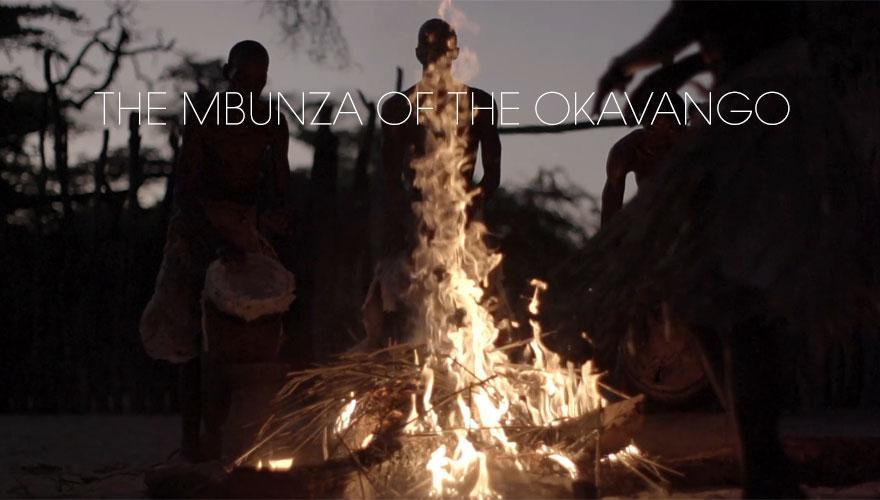
In April, we established a new financial system for the Living Museum of the Jo/’Hoansi, due to the repeatingly appearing internal quarrels over the distribution of finances. We explained the system and trained the financial manager of the museum.
In May we hold a great members meeting in Germany and participated at the “International Day of the museum” in Tangermünde with own activities and presentations about the foundation and their work.
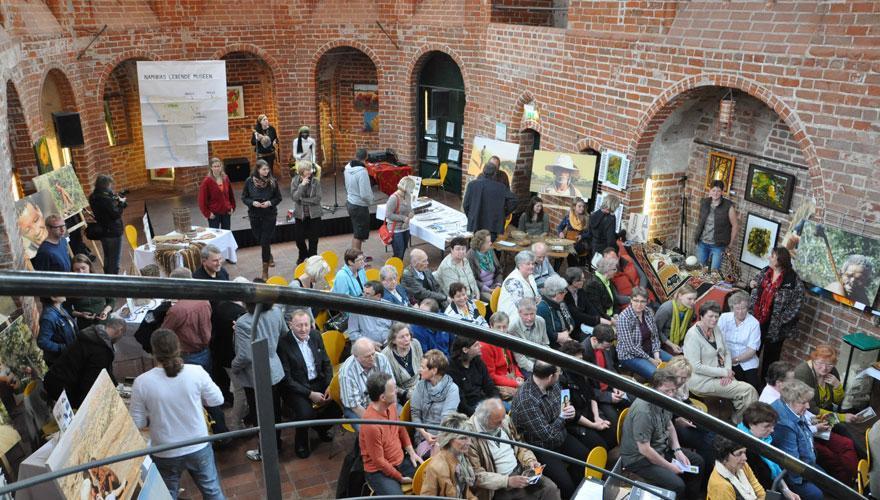
Furthermore, we had a big moment to celebrate – the 10th anniversary of the Living Museum of the Ju/’Hoansi in Grashoek. For this we organized a birthday party on the 6th of December 2014. In the name of the LCFN we invited many interested people to celebrate with us. Together with a traditional presentation provided of the San we organized a bow tournament. After the initiator of the museum Werner Pfeiffer held a short speech, the celebration with the San under a full moon lasted until the early mornings.
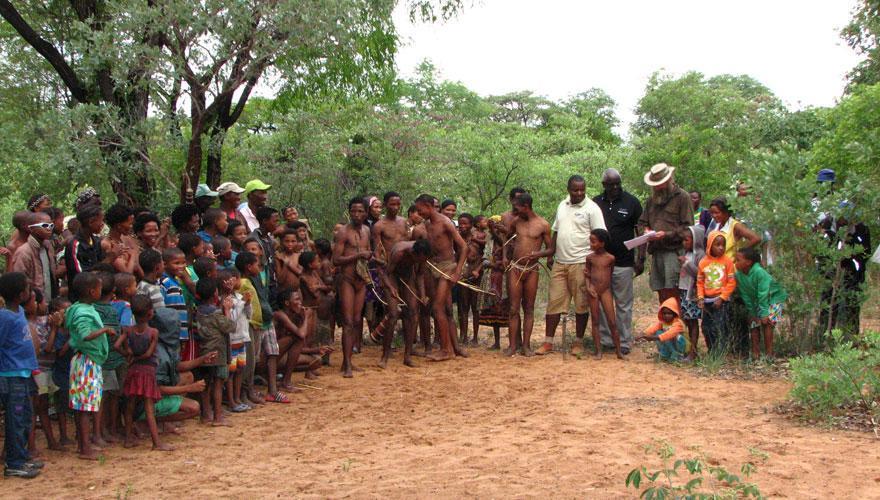
2015
Beginnings of the Ovahimba Museum, New signage
The Museums Association of Namibia (we are member since 2013) donated N$ 20.000 to the museum of the Mafwe and the Ju/’Hoansi in kinds such as office supplies, material for blacksmithing and ostrich eggs and the LCFN received a donation about N$ 25.000 for the new brochures.
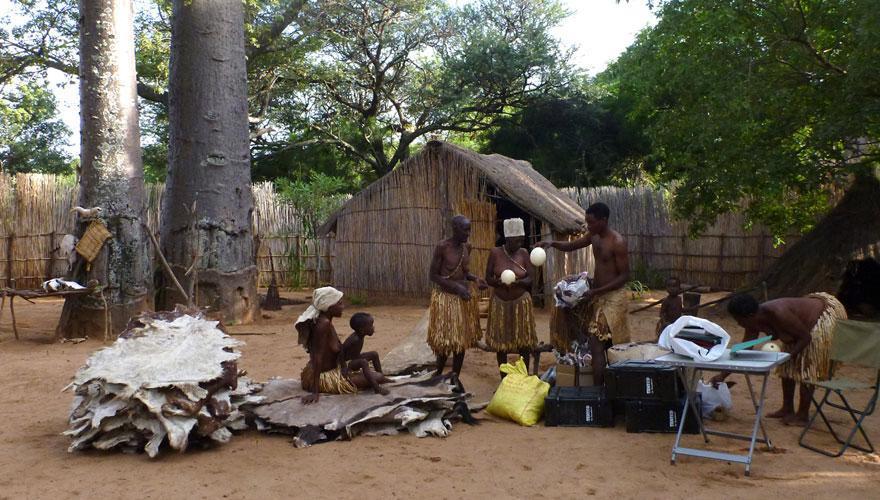
All museums were provided with new signs, since the old ones had been destroyed by the sun, weren’t readable anymore or just didn’t look good anymore. They have been installed during our regular project tours to the museums throughout the year.
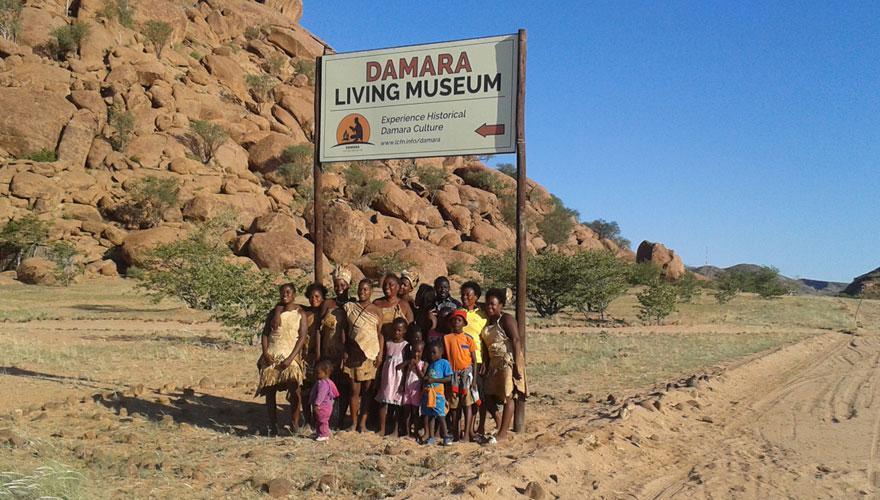
In March we again visited the group of the Khwe, which seemingly did not completely loose the interest in building up their own museum. The meeting went ok.
In August, we met for the first time with the young Herero John Tjipurua in Omungunda in the north of Opuwo (high up in the North of Namibia). He showed strong interest in developing a Living museum together we several groups of Himba, which he already gathered to start the project.
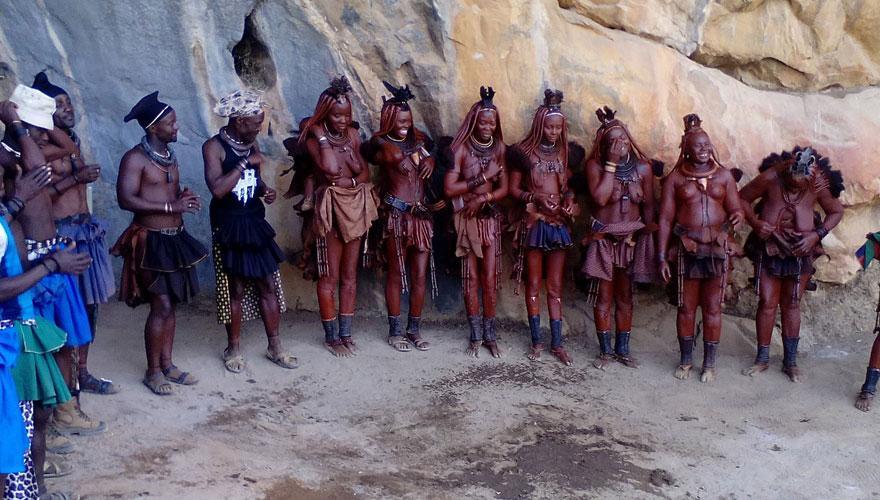
2016
More workshops and the opening of the Himba museum
Since the opening of the Living Museum of the Mbunza, the art of blacksmithing and wood carving unfortunately did not improve with the Mbunza as we hoped for. Another workshop was organized in 2016 by the LCFN to improve the quality of the goods the Mbunza produced. It should also improve the motivation of the people to produce and offer more quality crafts in their craftshops.
For the people of the Living Hunter’s Museum a workshop was oganized as well. The aim was to show all other men of the village how to prepare their own knife blades, spear- and arrowheads and axe blades for themselves in the future. The museum lacked those weapons and tools already for a while.
A visit at the Damara museum showed a deterioration of the financial accounting. This started since the financial manager Riacolin left the museum. The quality of the offered crafted goods also could have been better. We decided to have a workshop together with the Himba who still have some master smiths amongst them.
In May 2016, for 1,5 weeks, project manager Sebastian Dürrschmidt, Elizabeth and Gifty (the managers of the Mafwe museum) flew together to Germany. Within the International Day of the Museum they held several presentations about the live and work of the their group in Namibia. All in the all it was a colourful mix of cultural programs and presentations and for the two Mafwe an extraordinary experience.
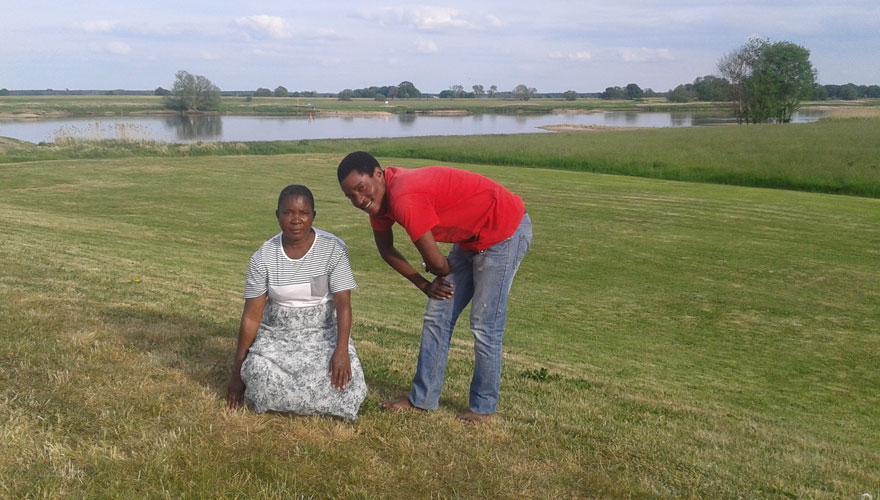
In Germany a fundraised lottery for the LCFN was carried out, where participants could win a trip across Namibia.
In July 2016 together with the Himba a beforehand planned workshop was performed - A big success! The group of Ovahimba invited a potter and a blacksmith, who trained the invited group of 4 Damara and the rest of the Ovahimba how to do smithery and pottery “à la Himba“. The conversations to consolidate the concept of the Living Museums were as well more than satisfactory.
The arranged program and its structure was very promising and the outcome for us, after only two project meetings and only one year of development of the museum more than suprising.
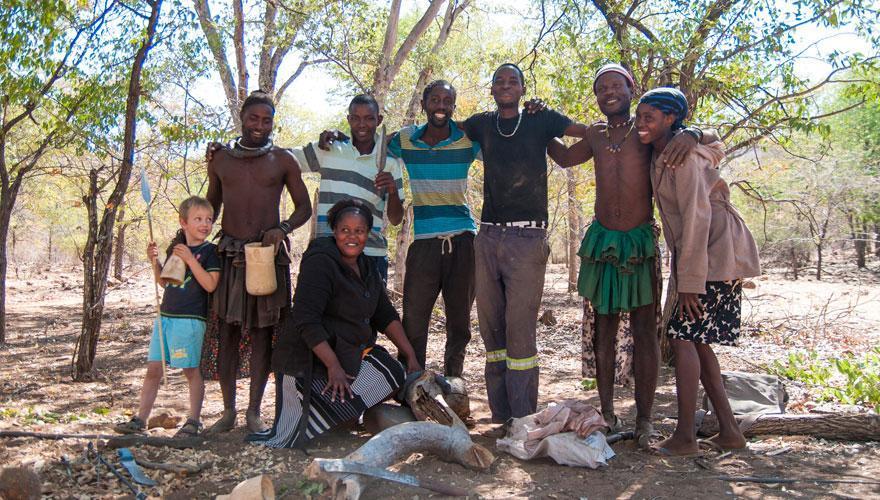
On the 15th of October 2016 the general rehearsal of the grand opening of the Himba museum took place. The cultural program was great and it had been decided to open the museum still in the same year. After only one and a half year preparation time the museum opened ont he 5th of November 2016 with a big ceremony.
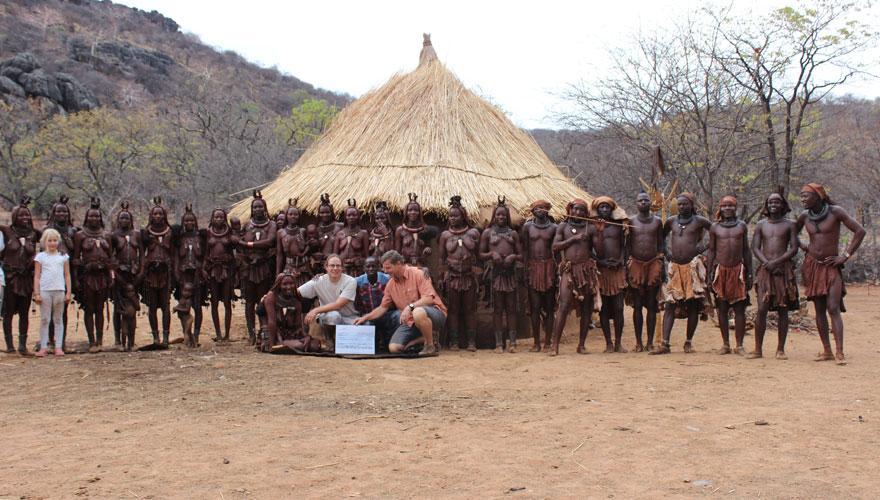
2017
Quality assurance, 10th anniversary of the LCFN
In April we visited the museum of the Ju/’Hoansi-San, the Living Hunter’s Museum, the Living Museum of the Mbunza and the Mafwe to help them solving some smaller issues, which appear now and then and in general to show our support. Every museum received new showcases and info boards, which replaced the old show cases.
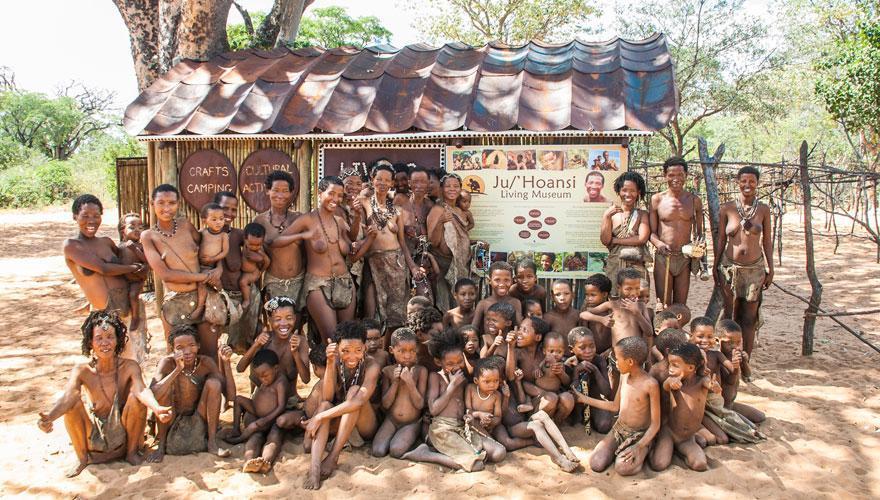
The Mafwe museum asked for a meeting with us, since some issue with the location of the museum occurred. The members of the museum presented a new location for the museum.
On the 28th of July the LCN e.V. celebrated it’s 10th anniversary – a reason to look back, reflect on the reach goals and the all the work which has been done so far.











